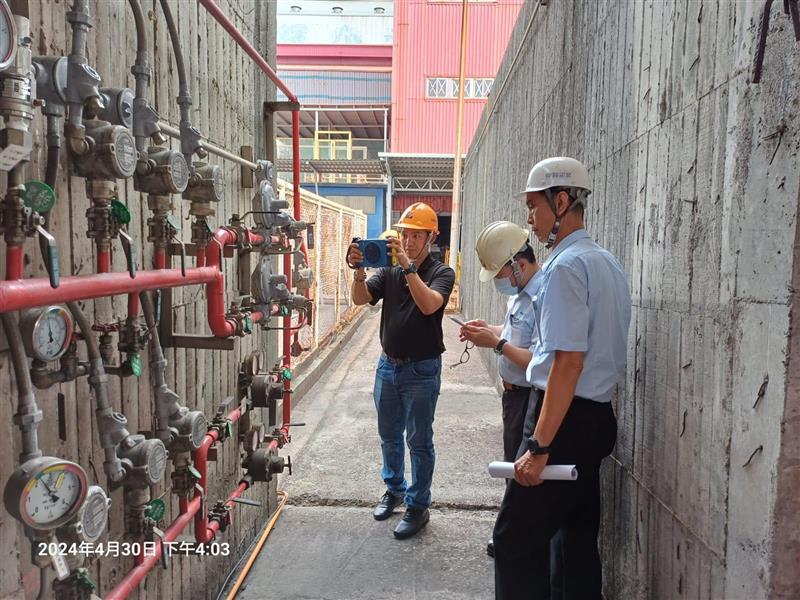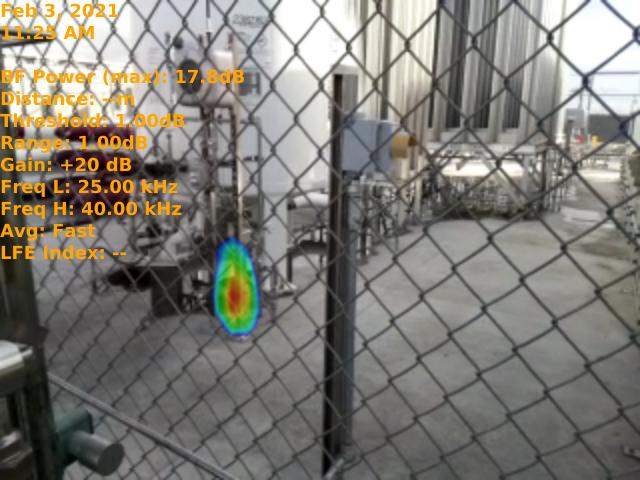Detect Fugitive Emissions
Fugitive gas leaks are a hidden threat to your operation.
- Overview
- FAQ
Fugitive emissions are a costly and dangerous byproduct of industrial processes. While often invisible, these unintentional gas leaks can compromise worker safety, environmental performance, and regulatory compliance. Ultrasound technology helps detect and locate leaks early—without shutdowns—so you can take action before small leaks become big problems.
Fugitive emissions are a major concern in oil and gas, petrochemical, power generation, and pharmaceutical industries—anywhere pressurized gas systems are used. These sectors face strict environmental regulations and high safety risks, making early leak detection critical.
Uncontrolled gas leaks can lead to safety hazards, environmental damage, product loss, and regulatory penalties. Methane and VOCs, in particular, are under increasing scrutiny due to their environmental impact.
Ultrasound instruments detect high-frequency sound generated by pressurized gas escaping through small openings. This allows for fast, accurate leak detection—even in noisy environments—without interrupting operations.

Stop Fugitive Emissions Before They Cost You
Fugitive Emissions Are a Hidden Threat that Threaten your Operations
Leaks from valves, flanges, seals, and pipe fittings release harmful gases into the atmosphere, creating safety, regulatory, and financial risks. Many traditional detection methods are slow, unreliable, or require shutdowns, leading to:
- Regulatory fines and non-compliance – Environmental agencies are cracking down on emissions violations.
- Energy waste and production losses – Leaking gases reduce efficiency and drive up operating costs.
- Serious safety hazards – Toxic or flammable gas leaks put workers and facilities at risk.

Find and Fix Fugitive Emissions with Acoustic Imaging
Most leak detection methods rely on handheld sniffers or infrared cameras, which can be time-consuming and require ideal conditions. Acoustic imaging changes the game by detecting the ultrasound produced as gas escapes, pinpointing leaks in real time-without contact or downtime.
- No shutdowns or disruptions – Find leaks while systems are running.
- Instant leak visualization – See exactly where gas is escaping.
- Faster, more thorough inspections – Scan vast portions of your system in minutes, not hours.
- Immediate cost savings – Reduce waste, prevent unplanned maintenance, and stay compliant.
Unlike traditional methods, acoustic imaging provides a fast, accurate, and cost-effective approach to fugitive emissions detection, helping you take control of leaks before they become expensive problems.
Leak Inspection Procedure
- Plan Your Survey – Identify high-risk areas and prepare for a structured fugitive emissions survey.
- Scan for Leaks – Use acoustic imaging to detect gas leaks instantly, even in complex facilities.
- Document & Report – Record findings, assess leak severity, and prioritize critical repairs.
- Schedule & Complete Repairs – Stop leaks before they lead to costly consequences.
- Verify & Monitor – Conduct follow-up inspections to ensure leaks are sealed and new ones aren’t forming.
Take Control of Your Fugitive Emissions
Uncontrolled gas leaks are more than just wasteful—they’re a serious financial and regulatory liability. Detect and fix leaks before they cause safety issues, compliance violations, or expensive downtime.
